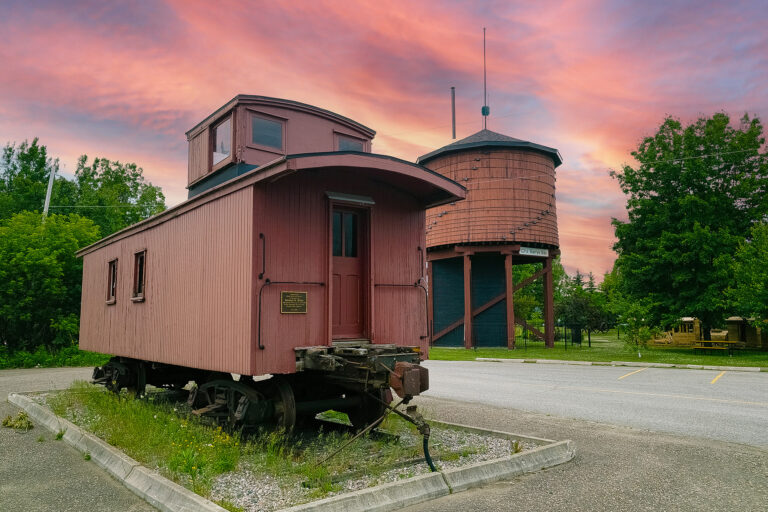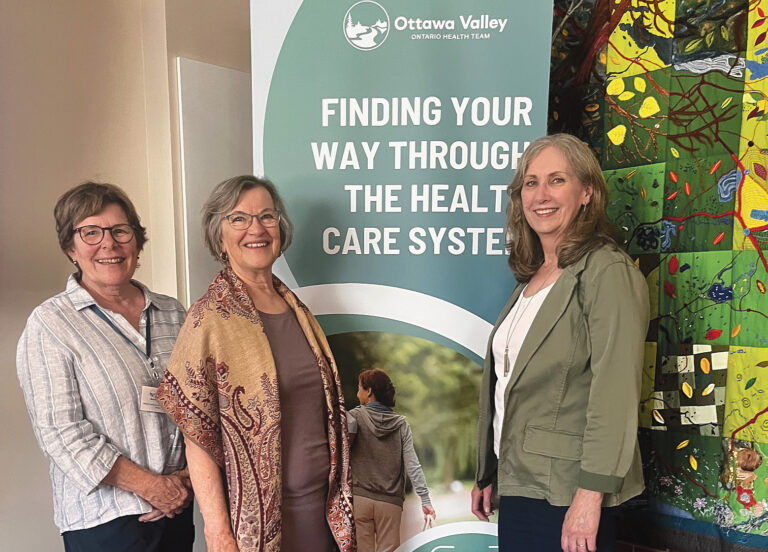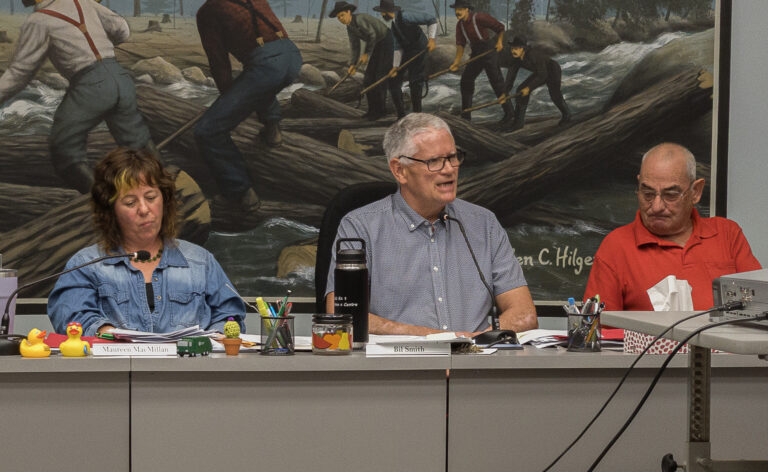
Robert Fisher
Staff Reporter
PEMBROKE – Renfrew County District School Board (RCDSB) is working to develop new outdoor learning spaces at 19 elementary schools in the county. The initiative is part of the drive to experiential and inquiry-based learning that is a pillar of the board’s strategic mission.
Kristen Niemi, director of education, Bill Murray, senior manager facilities, Scott Nichol, superintendent of education all with RCDSB and Jamie Thomson, director of development for Re-Nature Foundation, made a presentation to council for the County of Renfrew at its Aug. 13 meeting to provide an overview of the project and seek council support.
The school board will be asking municipalities in Renfrew County to provide letters of support for the program. The letters will be used as part of a grant application under the Growing Canada’s Community Canopies (GCCC) program sponsored by the Federation of Canadian Municipalities (FCM). They will be looking for $50,000 for each site, with a goal to install 19 sites at schools in the county.
Niemi informed council that the project aligns with the current board strategic plan. Nichol told council that, during consultations on the strategic plan, two recurring themes were student engagement and well-being. The project will extend the partnership with EcoSchools Canada. EcoSchools is an organization which promotes outdoor learning and environmental stewardship and provides certification to schools which achieve strong outcomes through outdoor learning and stewardship.
The board is engaging with Re-Nature on this project. Re-Nature works with schools and boards to help design and create outdoor learning spaces with the objective of fostering good mental health, educating about climate change and offering educational equity. The organization also acts as general contractor to build the spaces and works to source materials locally as much as possible and includes plantings that are native to or well-suited to the geographic region. Thomson also noted that the sites are designed to be accessible for those with mobility needs and pathways are designed to allow accessibility.
Niemi noted that spending time outside has shown to improve student’s mental health. The director also said increased screen use has contributed to a drop in student mental health outcomes. “Outdoor learning will address that need,” she stated.
Niemi explained that the tree canopy offers shade for students and seating provides the classroom along with blackboards. The concept requires a mentor to support the outdoor learning experience and a curriculum designed to be implemented outdoors.
“Every subject has connections to outdoor learning and environmental education,” Niemi told council.
“If people spend time outside, they will feel a greater sense of responsibility for their environment,” she said, about what research indicates. “And that is also why we want our students to be able to learn outside.”
The proposed spaces are between 5,000 and 7,000 square feet, where a typical classroom is about 800 square feet. The spaces will include a blackboard, storage, benches and stump seats, a teaching station, eco-restoration logs and 50 or more trees. Ecological restoration is a process of retroactively attempting to restore an ecosystem that has been damaged
or destroyed.
Adam Bienenstock, founder and board chair of Re-Nature, told the Gazette, that the logs are an important part of the design because, as they degrade and break down, they add back important nutrients that feed the other plantings in the classroom. Without the logs, other plantings will grow at a significantly slower rate than when the logs are included. The idea, he explained, is to recreate the natural soil biome that would exist in a natural forest area with trees that have died and fallen on the forest floor.
Niemi explained to council that, to assist with grant funding, the board would like municipal councils to pass a motion supporting the program. The FCM grant requires municipal support. The school board will cover funding gaps if grant funding is insufficient. No monetary contribution from municipalities is required. The board will apply for grants for schools in municipalities which provide the letter of support. The letter of intent to present a motion is required by the end of August.
The GCCC program offers $10 million per municipality on a 50/50 cost sharing basis. The federation has not been able to distribute as much funding as it would like because municipalities have been unable to match the funding. FCM has expanded the program which allows the school board to participate with support via a council motion from the municipality.
Warden Peter Emon said the concept, “aligns very closely with the work that Lacey Rose, our forester, has been doing for a number of years,” as well as the connection between the county and Shaw Woods.
Niemi said she is putting Re-Nature in contact with the Catholic school board, in response to a question from Coun. Jennifer Murphy.
Coun. Neil Nicholson asked about future maintenance of the sites. Murray said the board has incorporated maintenance into their plans for the project and if the board can find ways to partner with other groups or organizations to mitigate costs, they will do so.
Niemi said the board will work with schools that have existing outdoor learning spaces to determine how best to incorporate the proposed forest classrooms.
Niemi told the Gazette given the tight timeline, they would accept a letter of intent from a councillor to bring a motion to council to include with the grant application. Mayor Jennifer Murphy confirmed to the Gazette she is providing a letter of intent to bring a motion to the Sept. 2 council meeting in Bonnechere Valley. Mayor David Mayville informed the Gazette that he will bring a motion to the Aug. 20 council meeting for Killaloe, Hagarty and Richards. Mayor Valerie Jahn did not respond to an inquiry for Brudenell, Lyndoch and Raglan.
robert@thevalleygazette.ca





